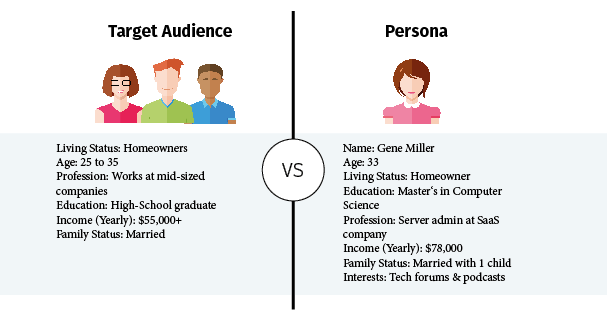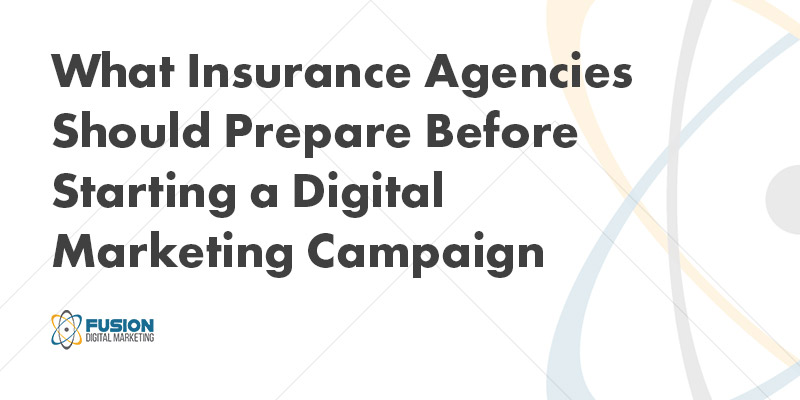Before getting into the technicals and strategies of digital marketing, you need to prepare some basic information to have on hand for the development of your campaign. From your website to ad copy and social media posts, you need to know a few things. What are your key selling points? Who are you targeting, and for what service? What are you trying to achieve? Is your customer buying or shopping? Some of this information may seem basic, but it is important for not only the preparation of your campaign but the execution.
Incorporating an Omnichannel Approach
An omnichannel approach means that not only are you making your brand accessible across online and offline channels, but you are taking it a step further to make sure the user experience is seamless between channels.
Creating an Omnichannel approach is achieved by:
- Performing data collection and data analysis to best strategize your campaigns
- Mapping your customer journeys from discovery to purchase to ensure a seamless flow
- Creating a brand guide for anyone working on the campaigns to adhere to
- Constant testing and optimizing for things like bugs, speed, efficiency, and messaging
Sticking to an omnichannel approach will allow for a better user experience, a united brand strategy, and identity, increased revenue, and better attribution data.
Conduct SWOT analysis
A SWOT analysis is a framework to analyze a business’s strengths, weaknesses, opportunities, and threats of internal and external factors. The results help create a strategic plan by identifying what needs to change to succeed moving forward and is taken into consideration during the development of any digital marketing strategy.
When performing your SWOT analysis, it’s important to avoid a biased mindset and focus on the hard data and facts in order to keep the analysis accurate.
To conduct your analysis, write down your agency‘s strengths, weaknesses, opportunities, and threats. The first two (strengths and weaknesses) involve internal factors, while the second two (Opportunities and Threats) involve external factors. When performing this task, try to bring in a diverse group of voices that can provide actual data points and not biased opinions.
Examples of each data point from an insurance agency perspective would be:
- Strengths (internal) are what makes an agency better than its competitors. Examples include offering a variety of insurance products, your reputation within your local community, your existing customer, well-trained staff, and in-depth knowledge of the industries you work with.
- Weaknesses (internal) are the things that make your agency worse than its competitors. Examples include relying on paper transactions, unreliable lead sources for sales, bad reviews, and a lack of trust people have for insurance agencies, all of which can be a significant hurdle.
- Opportunities (external) are external factors that can provide an opportunity for growth or improve your company’s position in the market.
- Threats (external) are external factors that could negatively affect your company‘s position in the market, for instance, economic and market trends or political regulations.

Establish SMART Business Goals
SMART business goals that work well with your SWOT analysis and are an essential part of a company’s strategic plan. Put simply; SMART goals are results you are working to achieve and are a clear standard of performance to what is expected of performance and professional development.
The SMART goals criteria are as follows:
- Specific goals should be detailed enough to be measured and achieved.
- Measurable goals that can be tracked for progress.
- Attainable goals need to be achievable.
- Relevant goals are worth the time and effort.
- Time-bound goals have deadlines.
When deciding on your SMART goals, you will need to know the scope of your goal or what to achieve. Most goals are the need to improve, increase, reduce, save or develop. Are you increasing monthly leads? Increasing sales? Decreasing customer wait times? When you are deciding your goals, it’s important to focus on the result and not the tasks.
For a more detailed look into SMART goals, here’s a great resource.
Market Segmentation in Insurance
Approaching your market as a whole won’t yield the best results, so the best strategy is to break down your market into segments. For many agencies, this is already done by segmenting demographic factors that include geography, education, and gender for personal lines of insurance. Examples of targeting factors for commercial lines include business needs, revenue, number of employees, and industry.
Traditional segmentations have focused on basic information like gender, age, revenue, and the number of employees. This strategy can do well in low-competition markets, but when you enter a more competitive climate, more detailed segmentation is necessary. For this reason, a customer-centric, hyper-personalized approach should be considered, which as an example, incorporates targeting the customer’s ‘lifestyle’ and not ‘age/gender’ or a business’s ‘budget constraints’ or ‘primary customer base.’
For more information on detailed customer segmentation, read: https://www.hyperon.io/blog/why-insurance-companies-need-customer-segmentation
Define Your Target Audience
A defined target audience is required for almost every step of the campaign, from mapping the customer‘s digital journey to copywriting and design. Building off of the previous section, we are simply building personas for each of your above-mentioned segmentations.
What is a target audience? It’s a group of people who are likely to be a customer of your business. This is often defined by age, gender, income, lifestyle, education, location, and demographic traits necessary to your campaign.
Figure what demographic traits you will be using in your definition; for an insurance agency, a good set of primary traits for personal lines are:
- Age
- Sex
- Income level
- Race
- Employment
- Location
- Homeownership
- Level of education
- Ethnicity
- Marital Status
Since we want hyper-personalized market segmentation so for secondary data variables we will target:
- Lifestyles (Demographic, Socioeconomic, Consumer Behavior)
- Life Milestones (Moving, Baby, New Car, etc.)
- Budget constraints
Now we can define our audience. Defining your target audience starts with analyzing your current customer base and performing interviews. Gather all the demographic traits listed above along with the secondary data variables.
Be hyper-focused in gathering your demographic data, you need to break down your market into detailed segments. Gather the necessary data from your homeowner customers, auto customers, boat, business, and any other segment you serve.
Create Personas
With your gathered data, we can create your buyer personas. It’s good to create a persona (fictional profiles) for each market segmentation (home, auto, boat, etc.). When creating each persona, fill in your basic demographic information and include what you’ve learned about your persona’s motivations.
Great eBook on customer personas.

Defining your current customers isn’t enough; analyze your web traffic, competitors, and general market to identify industry trends. With this data, we will be able to create additional personas to test in our marketing campaigns. Moving forward, it’s important to continually test and revise your campaigns for success.
Pro Tip: Common tools used in defining your target audience include:
- Sparktoro
- Google analytics
- SEMRush
- National Census Data
- Industry Reports
Map Your Customer’s Digital Journey
Building your customer’s digital journey is fundamental to your campaign’s success. Your mapped customer journey allows you to cover each interaction with your customers, starting from initial awareness to product experience as a customer. This allows you to improve customer experience, improve your product, increase customer engagement and help you better understand your customer.
Generally, an insurance customer’s journey will consist of:
- Customer awareness
- Consideration: the evaluation phase
- Customer decision
- New policy acquisition
- Customer experience during product ownership
- Customer retention
- Customer experience during product end
It’s important after you map out your customer’s journey that you perform testing and follow the mapped steps as your customer would when purchasing your product. This will reveal obstacles and potential technology errors the customer may experience during their journey of purchasing your product.
Fusion Digital Marketing is a full-service industry that provides your insurance agency with end-to-end online solutions. Contact us today for a complete analysis of your campaign and proposal for services customized to make your agency succeed in online lead generation.



